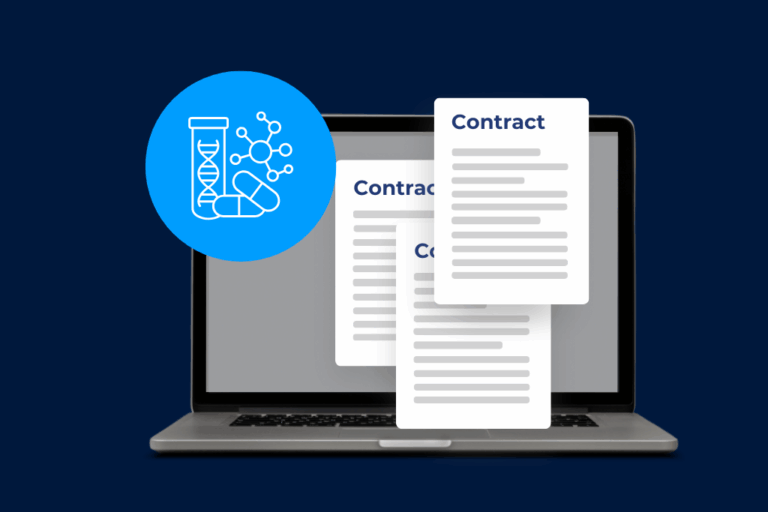Limited partnerships combine liability protection for passive investors with operational control for managing partners while offering tax advantages and flexibility. However, they require careful legal structuring, since general partners face unlimited liability, whereas limited partners benefit from restricted risk and involvement.
Limited partnerships are an important business structure that combines elements of both partnerships and corporations. This unique entity type offers specific advantages for businesses seeking a balance between liability protection and operational flexibility. For organizations looking to optimize their legal structure while maintaining clear roles and responsibilities, understanding the fundamentals of limited partnerships is essential.
What Is a Limited Partnership?
A limited partnership is a formal business arrangement between two or more parties where at least one person serves as a general partner who manages the business and assumes full personal liability for its debts, while one or more limited partners contribute capital but have restricted involvement in business operations and limited liability.
This business structure dates back centuries but remains relevant today. Limited partnerships are recognized in all states, though specific regulations vary by jurisdiction.
Key Characteristics of Limited Partnerships
Limited partnerships feature a distinctive two-tier partner structure:
- General partners control day-to-day operations and bear unlimited personal liability for the partnership’s obligations. They make business decisions and represent the partnership in legal matters.
- Limited partners act primarily as investors. They contribute capital to the business but typically do not participate in management. In exchange for this passive role, their liability is restricted to their investment amount.
This separation of roles creates a clear division of responsibilities and risks within the business entity.
Limited Partnership Agreements
The foundation of any limited partnership is its partnership agreement. This document outlines:
- Capital contributions from each partner
- Profit and loss allocation
- Management responsibilities
- Procedures for adding or removing partners
- Terms for dissolution
A comprehensive agreement helps prevent misunderstandings and provides a framework for resolving disputes.
Advantages of Limited Partnerships
Limited partnerships offer several benefits that make them attractive for certain business ventures.
Liability Protection for Limited Partners
Limited partners enjoy protection from business debts beyond their initial investment. This protection makes limited partnerships appealing to investors who want to participate in business opportunities without risking personal assets.
Favorable Tax Treatment
Limited partnerships are pass-through entities for tax purposes. This means the partnership itself does not pay income tax. Instead, profits and losses “pass through” to individual partners, who report them on their personal tax returns. This approach avoids the double taxation that affects corporations.
Management Flexibility
The structure allows for clear separation between those who manage the business (general partners) and those who provide capital (limited partners). This arrangement works well for businesses where specialized expertise is needed for operations, but additional capital is required for growth.
Privacy Considerations
Compared to corporations, limited partnerships often have fewer public reporting requirements in many states. This relative privacy appeals to businesses that prefer to maintain confidentiality about their internal operations and ownership structure.
Disadvantages and Challenges
Despite their advantages, limited partnerships come with certain drawbacks.
Unlimited Liability for General Partners
While limited partners enjoy liability protection, general partners remain personally liable for partnership debts and obligations. This significant risk means general partners must carefully consider their exposure when forming or joining a limited partnership.
Formation Complexity
Establishing a limited partnership involves more paperwork than a general partnership. Requirements typically include:
- Filing a certificate of limited partnership with the state
- Drafting a comprehensive partnership agreement
- Obtaining necessary licenses and permits
- Complying with state-specific regulations
Additionally, maintaining the partnership requires ongoing attention to regulatory obligations, including annual reports in many states.
Potential for Partner Conflicts
The inherent power imbalance between general and limited partners sometimes creates tension. Limited partners might feel they have insufficient control over their investment, while general partners might resent bearing all the liability while sharing profits.
Setting Up a Limited Partnership
Forming a limited partnership requires attention to legal formalities and state-specific requirements.
Registration Process
To establish a limited partnership, founders must:
- Select a business name that complies with state requirements
- File registration documents with the appropriate state office
- Pay required filing fees
- Draft a detailed partnership agreement
- Obtain an Employer Identification Number (EIN) from the Internal Revenue Service
The specific process varies by state, with different forms, fees, and processing times.
Jurisdictional Considerations
When choosing where to register a limited partnership, consider:
- State filing requirements and fees
- Annual reporting obligations
- Privacy protections offered
- Tax implications
- Legal protections for partners
Some states are more business-friendly than others regarding limited partnerships, offering streamlined processes or enhanced privacy.
Limited Partnerships vs. Other Business Structures
Understanding how limited partnerships compare to other business entities helps in making informed decisions about the most appropriate structure for specific business needs.
Comparison with General Partnerships
Unlike general partnerships where all partners have management authority and unlimited liability, limited partnerships create distinct roles with different levels of risk and responsibility. This makes limited partnerships more suitable for businesses with passive investors.
Differences from Limited Liability Companies (LLCs)
LLCs offer liability protection to all owners (members), whereas limited partnerships only protect limited partners. Additionally, LLCs typically provide more flexibility in management structure and tax options.
Contrast with Corporations
Corporations provide liability protection to all shareholders but face more regulatory requirements and potential double taxation. Limited partnerships offer more privacy and tax advantages but less universal liability protection.
Governance Best Practices for Limited Partnerships
Effective governance is crucial for limited partnership success and compliance.
Decision-Making Processes
Establishing clear protocols for decision-making helps prevent conflicts and ensures efficient operations. The partnership agreement should specify:
- Which decisions require unanimous consent
- Which decisions general partners are allowed to make independently
- How limited partners receive information about significant business matters
Record-Keeping Requirements
Maintaining accurate records is essential for limited partnerships. These records include:
- Financial statements
- Partner capital accounts
- Meeting minutes
- Tax documents
- Regulatory filings
Digital governance solutions streamline record-keeping and ensure all partners have appropriate access to information.
Technology for Partnership Management
Modern governance software helps limited partnerships manage their operations more efficiently. Digital solutions facilitate:
- Secure document sharing
- Transparent financial reporting
- Streamlined communication between partners
- Compliance tracking
- Contract management
These tools are particularly valuable for partnerships with multiple limited partners or complex operations across different jurisdictions.
Unlocking the Value of Limited Partnerships with Smart Governance
Limited partnerships offer a distinctive combination of liability protection for investors and operational control for managers. While they present certain challenges – particularly for general partners who bear unlimited liability – they remain valuable structures for specific business scenarios.
For businesses considering a limited partnership structure, careful planning and professional guidance are essential. The right combination of legal expertise and governance tools helps ensure compliance while maximizing the benefits this business form offers.
DiliTrust’s Governance Suite provides comprehensive solutions for managing the complexities of limited partnerships. From secure document management to streamlined entity governance, our platform helps partnerships maintain compliance, enhance communication, and optimize operations across all aspects of their business. Want to learn more? Contact us today!


